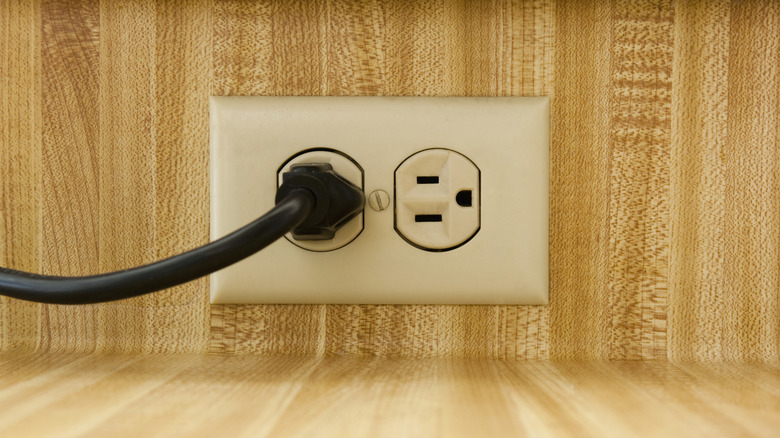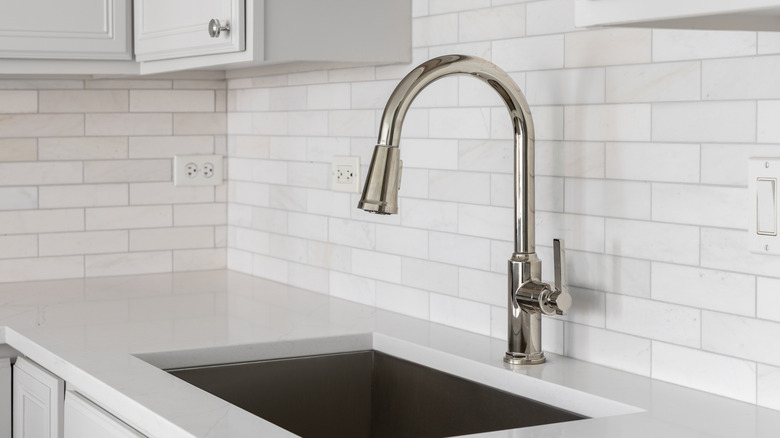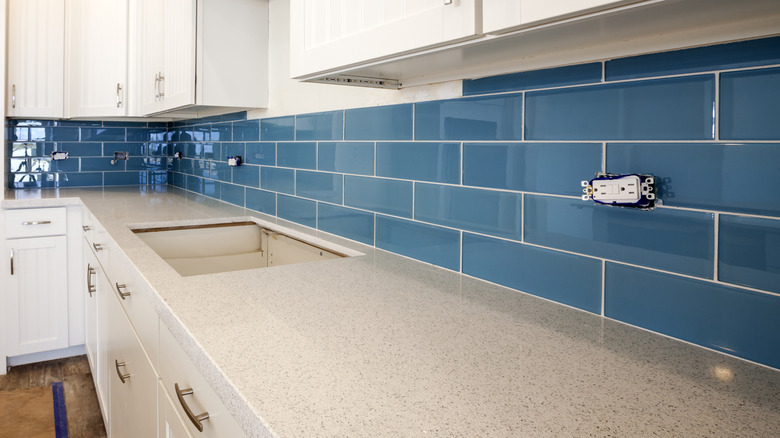Why Are Some Outlets Horizontal?
If you walk around your home, you will probably see a variety of outlets. In fact, there are a whopping 10 types of electrical outlets commonly found in every home. You might also notice a somewhat confusing trend: Some outlets are installed upside down or sideways. There are a few different reasons why this may be the case in your home. You might find horizontal outlets in the bathroom or the kitchen above countertops. While these may look like some kind of installation accident, outlets can be installed sideways intentionally, typically to make sure they are safely placed or for purely aesthetic reasons.
There are no rules from the National Electrical Code (NEC) that require an outlet on a wall to be any particular orientation. They can be installed with the ground pin down, the ground pin up, or sideways, with the ground pin either left or right. There can also be a variety of orientations throughout a home or even in a single room. One rule that might influence which way an outlet is installed, however, are the space requirements. For example, countertop spaces require the maximum space between outlets to be 4 feet, and that no part of the countertop is more than 2 feet from a receptacle. So, there are times when an outlet may need to be installed sideways in order to fit into a spot where it is required to be installed.
Common reasons for sideways outlets
The required placements of electrical outlets may also influence outlet orientation, as a horizontal outlet may provide easier access for plugging items in depending on the location. For instance, a vertical outlet behind an appliance or piece of furniture may give you no access points, while a horizontal outlet in the same location may allow you to access at least one of the receptacles. If an outlet is needed in a certain location but it is also clear that the spot will be blocked, then an outlet may be installed sideways to try to improve access.
Another common reason for horizontal outlets in your home is simply the result of aesthetic choices. Electrical outlets are obviously a necessity, but if you're on the hunt for brilliant hacks to make your kitchen more aesthetic, you may find yourself wanting to hide them. While this can help your kitchen look nice, covering the outlets reduces their functionality. Instead of hiding an unsightly vertical outlet, some people choose to install horizontal outlets. Horizontal outlets can have a look that is more low profile, which is especially nice for outlets that are placed higher up on walls, such as above countertops. In kitchens especially, horizontal backsplash patterns, such as subway tiles, are popular, and horizontal outlets are especially good in these situations. Rather than break up the look with a vertical rectangle, outlets can blend in seamlessly when they are turned sideways.
Should you change the orientation of outlets in your home?
Now that you know that outlets can be installed sideways for increased practicality or aesthetics, you may find yourself wondering how to update your home's electrical outlets or simply change their orientation. If you are designing or remodeling and wondering if you need to install your outlets horizontally, the answer is probably not, though you may choose to do so. If you know your countertop coffee machine will use one receptacle and block both on a vertical outlet, you might want to try sideways. However, if you choose a vertical backsplash design, you might want to stick with the typical vertical orientation for your electrical outlets. Before making any final decisions, you should speak to a professional electrician to ensure that they will be placed correctly, and consider the price of having an electrician rotate each outlet.
It is also possible to install or rotate an outlet on your own, but switching between vertical and horizontal will require you to change the shape of the hole in your wall. Plus, for those inexperienced with electrical work, it may be best to hire an electrician, even if the cost may add up. Regardless, if you see a sideways outlet, you can rest assured that there's nothing to worry about. It was a simple decision made by the electrician or builder, and it might even help to make your space a bit more convenient.


